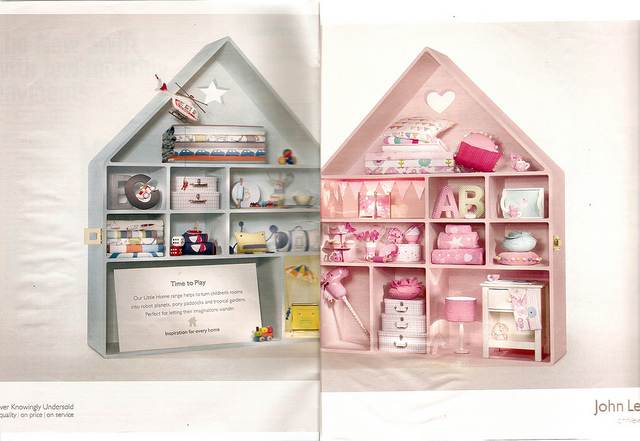The Phenomenon of Gendered Products
Whether you realize it or not, whenever you go shopping at any type of store products are divided up based on gender. There are products for men and products for women, each in their own section, with their own price, and with their “appropriate” color and style. We are so accustomed to seeing gendered products that many of us, including myself, do not think twice when we need to buy something. For example, if I as a woman need to buy a razor, I will instinctively gravitate towards the section for women and buy the one that says “for her,” while men will be inclined to buy the razor labeled “for men.” The problem is that many of these gendered products have the same function and could be equally used by any gender, but our society has decided what is suitable for each gender. By continuing to gender the market, it preserves the notion that men and women are supposed to use different products, as if it is just a “normal” part of gender, while simultaneously maintaining stereotypes about what is “womanly” or “manly.”
This marketing of gender phenomenon that permeates society through the strategy of relying on stereotypes enables corporations to sell more. By creating two of each of item, such as weight loss pills, hair products, soap, razors, toys, and more, companies generate profit by having multiple products for the same item and thus more products can be purchased. And nothing is safe from gender. Items you would not even think could be gendered actually exist. For instance, corporations have designed a toothpaste for men and special pens for women. No one would think these products are gendered until society starts to tell us they are.
Not only do companies sell more through gendering their products, but in addition items labeled “for her” tend to be higher in price than those “for men.” Essentially women are paying higher prices to purchase items that are more “womanly” but function exactly the same as the equivalent male product. Women and men are unconsciously on autopilot; our society has programmed us to automatically walk into a store and head directly to the “normal” section for our gender. However, there is nothing wrong with women using products “for him” if they serve the same function. Ignore the packaging and the direction in which the store tells you to go, if “men’s” products are cheaper you might as well use them. Similarly, just how women have been trained by society to use products “for her,” men are typically embarrassed to use “feminine” products and feel they must use “manly” products in order to preserve their masculinity. But really, in the end will using “mansize” tissues truly make someone more of a man?
Besides upping prices for women, corporations continue to perpetuate stereotypes about gender through the packaging of the products themselves. Products with light colors such as pink and purple with a gentle packaging and sweet smell are meant for women, while products with darker colors like blue, grey, and black with a rigid packaging, aggressive slogan, and strong scent are meant for men. None of these features are an innate part of gender, yet society continues to tell us that color is gendered or that men need tough armor for their odor, not something fruity because that is too “womanly.” If you actually compare both products side by side, they serve the same function and the only difference is in the package; men’s shampoo and women’s shampoo both clean your hair, or men’s soap and women’s soap both kill germs. However, while some products may be the same, sometimes there can be slight differences in the quality of the product just because it is specifically designed for a certain gender, such as with men’s and women’s razors.
Products that get gendered can be absolutely ridiculous, but it is not going to stop anytime soon; society will always unnecessarily gender items because of the market demand. Because we grow up in a society designed around gender it is hard to realize we have been buying into the “for her” versus “for him” scheme our entire lives. To change this, it starts with being more aware. Instead of buying a product because it is the “correct” gender for you, buy something because you actually want it or it is a good price, it does not matter if it matches what society presumes to be “normal” for your gender.





